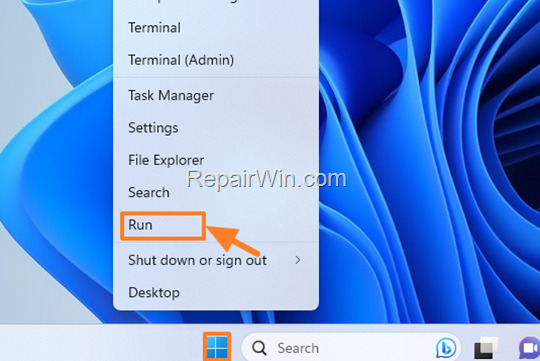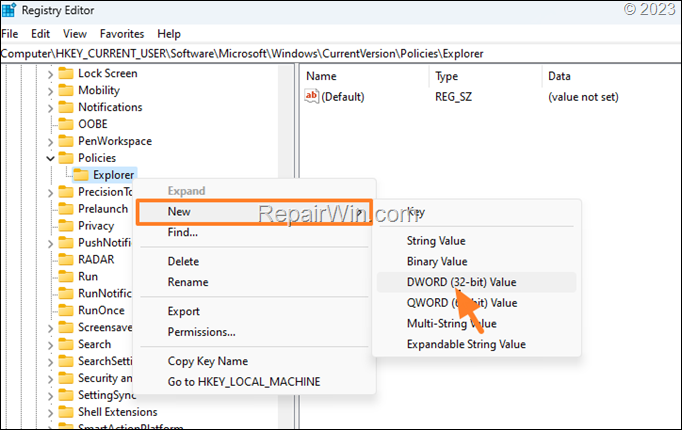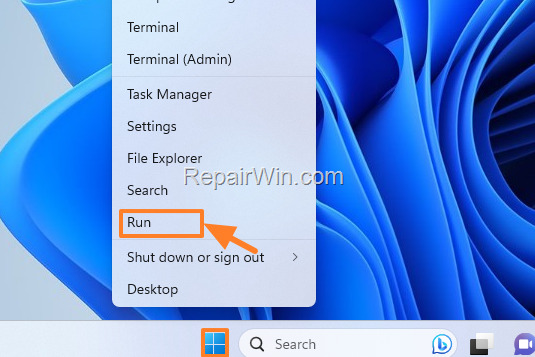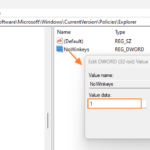If you’re looking for a method to disable the Windows hotkeys/shortcuts in Windows 10/11. (e.g. the “Windows key ![]()
![]() + E” to open Explorer, “Windows key + R” to open the Run command box, etc.), continue reading below.
+ E” to open Explorer, “Windows key + R” to open the Run command box, etc.), continue reading below.
The Windows key ![]()
![]() is used in combination with other keyboard keys to make certain Windows tasks easier to perform. However, if you accidentally press any of these combinations, you may open/close programs or activate features you don’t need. In other cases, you may want to disable Windows key shortcuts to prevent others from using them.
is used in combination with other keyboard keys to make certain Windows tasks easier to perform. However, if you accidentally press any of these combinations, you may open/close programs or activate features you don’t need. In other cases, you may want to disable Windows key shortcuts to prevent others from using them.
In this guide you’ll find two ways to deactivate the keyboard shortcuts on Windows 10/11 OS. *
* Notes:
1. The below methods only disable the following Windows hotkeys on Windows 10/11:
- Windows key + E: This opens the File Explorer window.
- Windows key + R: Opens the Run dialog box.
- Windows key + D: Minimizes all open windows and shows the desktop.
- Windows key + S: This opens the Search bar.
It won’t disable the Windows key shortcuts: Windows + I (Settings), Windows + X (open the quick menu when pressing the right-click on Start menu), Windows + L (Locks Computer), or Windows + Tab (shows all open windows).
2. If you want to all the Windows key combinations, proceed and disable the single Windows key on your keyboard, by using the instructions on this guide: How to Disable Windows Key on Windows 10/11.
Method 1. Disable Windows Hotkeys in Registry. *
The first method to deactivate the Windows key shortcuts is through Windows Registry. To do that:
1. Right-click at Start menu and select Run.


2. Type regedit and press OK (or Enter) to open the Registry Editor.
![image_thumb[4] image_thumb[4]](https://qnet88.com/wp-content/uploads/2023/09/image_thumb4_thumb-2.png)
![image_thumb[4] image_thumb[4]](https://qnet88.com/wp-content/uploads/2023/09/image_thumb4_thumb-2.png)
3. In Registry Editor, navigate to the following path:*
- HKEY_CURRENT_USERSoftwareMicrosoftWindowsCurrentVersionPolicies
4a. Right-click at “Policies” key and chose New > key.


4b. Name the new key “Explorer” and press Enter.
5a. Now, right-click at “Explorer” key and select New > DWORD (32-bit value)


5b. Name the new value as: “NoWinkeys” & press Enter.
5c. Finally, double-click to open the “NoWinkeys” value, type “1” at the value data box and click OK.


6. Close the Registry Editor and restart your PC, or restart Explorer using task manager to apply the setting.
a. Press CTRL + SHIFT + ESC to open Task Manager.
b. At Processes tab, right-click at Windows Explorer and click Restart to apply the change.
7. After you restart the computer or Windows Explorer, the Windows key hotkeys will not work.
To Enable the Windows key hotkeys:
To re-enable the disabled Windows key combinations:
1. Open the registry editor.
2. Navigate to the following path:
- HKEY_CURRENT_USERSoftwareMicrosoftWindowsCurrentVersionPoliciesExplorer
3. Delete the “NoWinkeys” REG_DWORD value, or change its value from “1” to “0“.


Method 2. Disable Windows key hotkeys through Group Policy.
If you using Windows 11/10 Pro version, you can disable the Windows key combinations in Local Group Policy, using the instructions below:
1. Right-click at Start menu and select Run.


2. Type gpedit.msc to open the Group Policy Editor.


3. In Policy Editor, go to the following path:
- User Configuration > Administrative Templates > Windows Components > File Explorer
4a. At the right-pane open the Turn off Windows Key hotkeys policy.


4b. Select Enabled and click Apply > OK.


5. Close the group policy editor and restart your computer to apply the change.*
* Note: To re-enable the Windows hotkeys, set the “Turn off Windows Key hotkeys” policy to “Disabled” or “Not Configured“.
That’s all folks! Did it work for you?
Please leave a comment in the comment section below or even better: like and share this blog post in the social networks to help spread the word about this solution.




